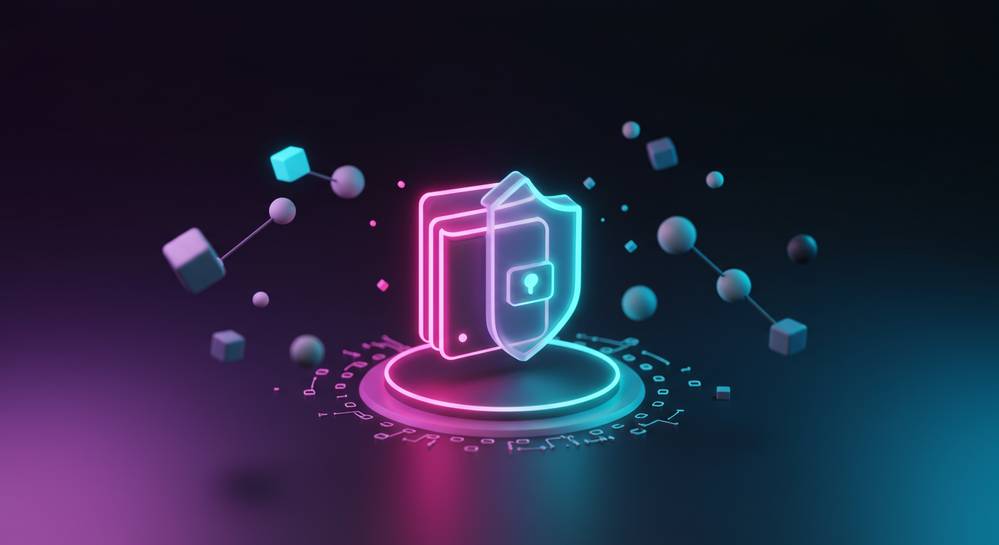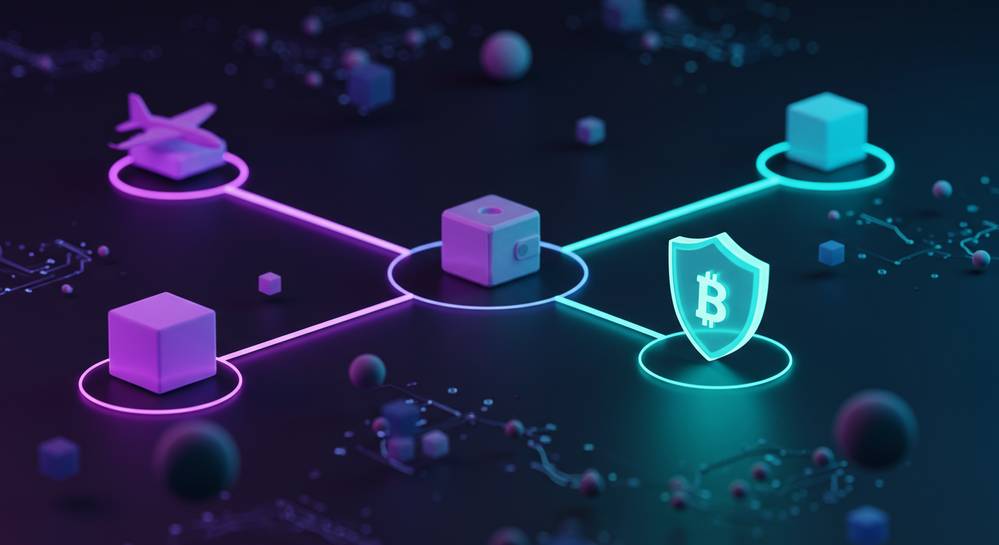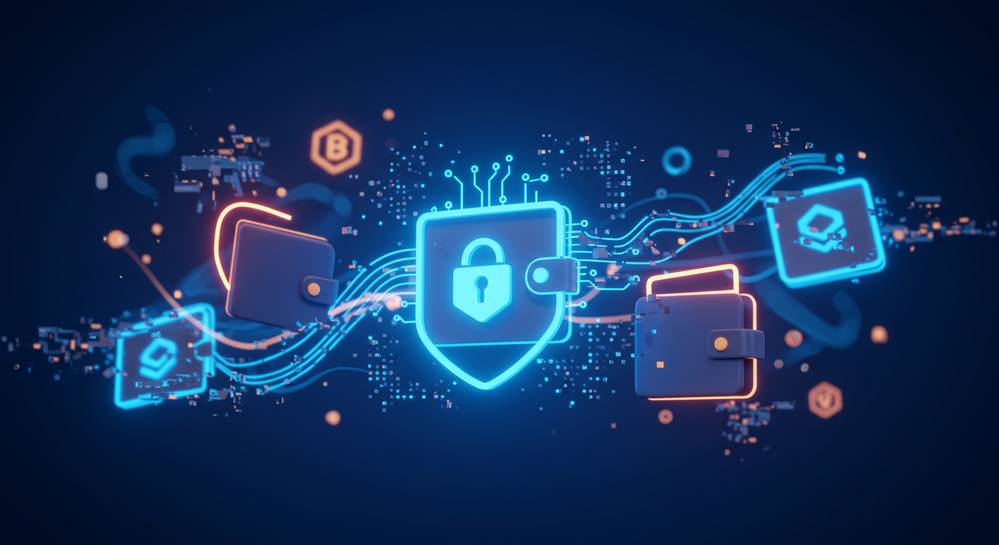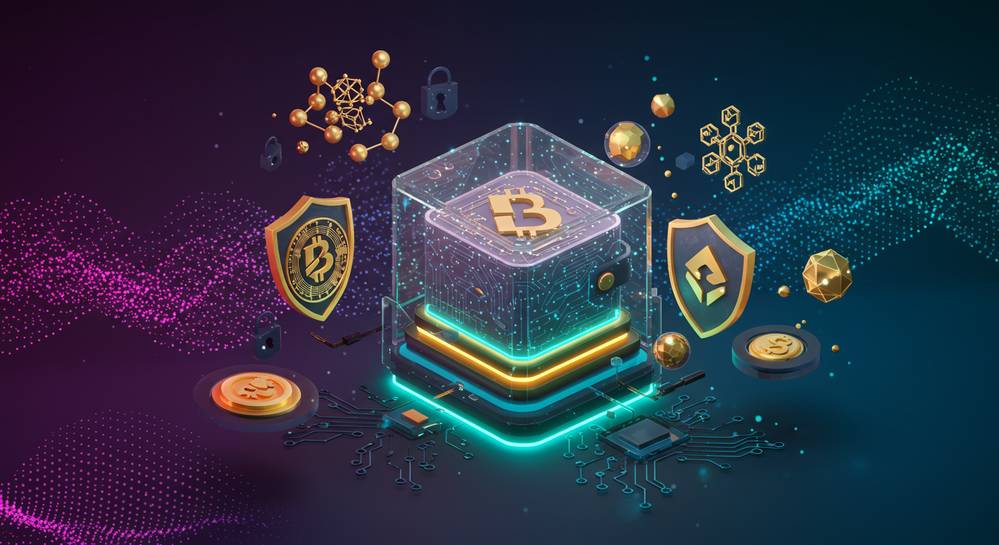Entering the world of cryptocurrency requires a secure place to store your digital assets. But with countless options and security risks, learning how to create a crypto wallet safely is the most critical first step. This guide provides a clear, actionable process, ensuring you can manage your crypto with confidence and peace of mind, protecting it from common threats and mistakes right from the start.
Understanding crypto wallet fundamentals

Before creating a wallet, it is crucial to understand its core components. A crypto wallet does not store your digital currency like a physical wallet stores cash. Instead, it holds your private keys, which are secret cryptographic codes that prove your ownership of assets on the blockchain and allow you to make transactions. Understanding this distinction is the first step toward true security.
Custodial vs non-custodial wallets
A key decision is choosing between a custodial or non-custodial wallet. A custodial wallet, often found on crypto exchanges, means a third party holds your private keys. While convenient, it introduces counterparty risk. A non-custodial wallet gives you full control over your keys, embodying the crypto mantra, not your keys, not your coins. For maximum safety, a non-custodial wallet is the recommended choice.
The role of public and private keys
Every wallet has two main parts: a public key and a private key. The public key generates a public address, which you can share with others to receive funds, similar to your bank account number. The private key must be kept secret at all costs. It signs transactions and grants access to your crypto. Losing your private key means losing your assets forever.
How to create a crypto wallet safely
The process to create a crypto wallet safely begins with its most critical element: the seed phrase. This sequence of 12 to 24 words is the master key to all your private keys. It is your sole backup if you lose access to your device. Securing this phrase correctly from the very first moment is the foundation of your entire crypto security strategy. Following the best practices for crypto wallet security is not optional.
Your top priority is to protect this seed phrase from digital and physical threats. True financial sovereignty demands absolute personal responsibility. To do this effectively, adhere to these non-negotiable rules:
- Write your seed phrase down on paper or metal. Never store it on a computer or phone.
- Do not take a screenshot or photograph of the words. Digital copies are vulnerable.
- Store the physical backup in multiple secure, private, and separate locations.
- Never share your phrase with anyone, including customer support or developers.
By following these steps, you build a strong defense for your assets. Properly learning how to store your crypto seed phrase safely is the most important action you will take. It ensures you alone have control over your digital wealth, which is the core principle of decentralization.
Choosing the right type of wallet for you

The level of security you need depends on how you plan to use your crypto. Different wallet types offer different balances of security and convenience. Choosing the right one is a foundational step in learning how to create a crypto wallet safely. We can broadly categorize them into hot wallets and cold wallets, each serving a distinct purpose for asset management.
Hot wallets for convenience
Hot wallets are always connected to the internet. They include desktop applications, mobile apps, and browser extensions. Their constant online connection makes them convenient for frequent trading and daily transactions but also more vulnerable to online attacks, malware, and phishing attempts. They are ideal for holding small amounts of crypto that you need to access regularly, similar to a checking account.
Cold wallets for maximum security
Cold wallets are physical devices that store your private keys completely offline. Transactions are signed on the device itself, meaning your keys are never exposed to an internet-connected computer. This method, known as cold storage, makes them highly resistant to online threats like hacking. Cold wallets are the gold standard for long-term storage and securing large amounts of digital assets, acting like a secure vault.
A practical guide to creating a software wallet

Setting up a non-custodial software wallet is a straightforward process and an excellent first step into self-custody. The following guide uses a browser extension wallet as a model. These core security principles are universal and essential for anyone learning how to create a crypto wallet safely, regardless of the specific software used.
Key steps for secure wallet creation
- First, download the wallet software directly from its official website. Always verify the URL is correct before downloading to avoid fake sites designed by scammers to steal your assets.
- Next, you will create a password after installation. This password only protects the wallet on your specific device. For enhanced protection, learn how to create a strong crypto password.
- The most critical step is securing your secret recovery phrase. The wallet will generate a 12 or 24-word phrase, which is the master key to all your funds.
This phrase is your only backup. Anyone who has it can control your crypto. Write it down physically and store it in multiple secure, offline locations. Never store it digitally.
Finally, the application will ask you to confirm the phrase to ensure you have recorded it accurately. Once confirmed, your wallet is ready to use.
Essential security practices to protect your assets
Creating your wallet is only the beginning. Maintaining its security is an ongoing process that requires vigilance and adherence to best practices. Ignoring these can expose your assets to significant risk, regardless of the wallet type you choose.
- Guard your seed phrase. Your Secret Recovery Phrase is your most valuable asset. Never share it with anyone, not even support staff. Store physical copies in secure, private locations.
- Beware of phishing scams. Scammers will try to trick you into revealing your keys through fake emails, websites, or messages. Always be skeptical and verify every link.
- Use a dedicated device for crypto. If managing significant assets, use a computer or phone exclusively for these activities. This reduces the risk of malware infection.
- Double-check transaction details. Before confirming any transaction, carefully verify the recipient address and the amount. Transactions on the blockchain are irreversible.
- Enable two-factor authentication (2FA). For any service connected to your crypto activities, like an exchange, always enable 2FA for an extra layer of security.
Securing your digital assets begins with understanding the tools you use. By choosing the right wallet type, meticulously safeguarding your secret recovery phrase, and adopting a vigilant mindset against threats, you build a strong foundation for your crypto journey. Your security is your responsibility. For more in-depth guides and analysis on navigating the world of decentralized finance safely, visit Crypto Finance Daily.



